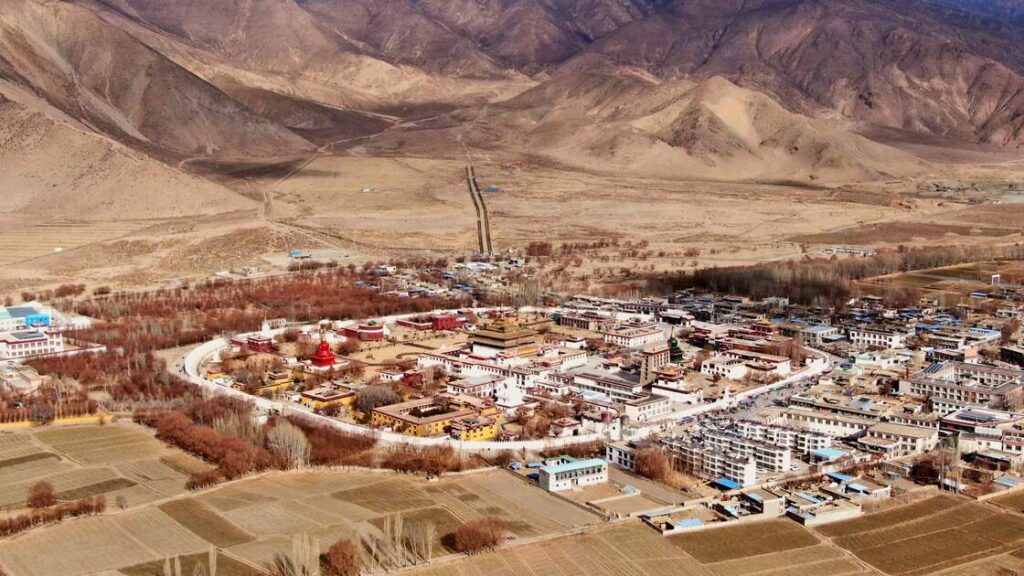+86-15889090408
[email protected]
Samye Monastery, located in the Dranang Valley of Tibet, is a site of immense historical and religious significance. It holds the distinction of being the first Buddhist monastery in Tibet, making it a cornerstone in the history of Tibetan Buddhism.

The monastery was founded in the 8th century by King Trisong Detsen, with the assistance of the Indian Buddhist masters Padmasambhava (Guru Rinpoche) and Śāntarakṣita. This marked a pivotal moment in Tibetan history, as it was the formal introduction of Buddhism to Tibet.
Samye Monastery’s layout is highly symbolic, representing the Buddhist universe according to the ancient Indian model. The central temple, Utse, symbolizes Mount Meru, the mythical center of the universe. Surrounding it are a series of smaller temples representing continents and subcontinents, all within a large, circular wall symbolizing the ocean.

The monastery’s design blends Indian, Tibetan, and Chinese architectural influences, reflecting the cosmopolitan nature of Tibet at the time of its construction. The main temple is a three-storied structure, with each floor showcasing a different style: Indian on the first floor, Tibetan on the second, and Chinese on the third.
Samye Monastery is a sacred site for Tibetan Buddhists. It has been a center of learning, meditation, and pilgrimage for centuries. The monastery belongs to the Nyingma school, the oldest of the four major schools of Tibetan Buddhism, but it is respected and venerated by all.
The walls of the monastery are adorned with ancient frescoes and carvings, which depict various aspects of Buddhist teachings and Tibetan history. These artworks are of great cultural and historical importance.
Over the centuries, Samye Monastery has faced numerous challenges, including damage during the Cultural Revolution. However, it has been restored and continues to function as a monastic and pilgrimage site.

The monastery hosts several religious festivals and events throughout the year, attracting monks, pilgrims, and tourists. These events are vibrant and colorful, showcasing Tibetan religious practices and traditions.
As a pilgrimage destination, Samye is visited by Buddhists from all over Tibet and the world. For tourists, it offers a deep insight into Tibetan Buddhism’s origins and practices, as well as the opportunity to experience the tranquil beauty of the surrounding landscape. The monastery is accessible from Lhasa, and the journey there, traversing the Tibetan plateau, is as spectacular as the destination itself.
In summary, Samye Monastery is not just an architectural marvel but a living museum of Tibetan Buddhism. Its historical, religious, and cultural significance, combined with its stunning location, make it a must-visit for anyone interested in the spiritual and cultural heritage of Tibet.
